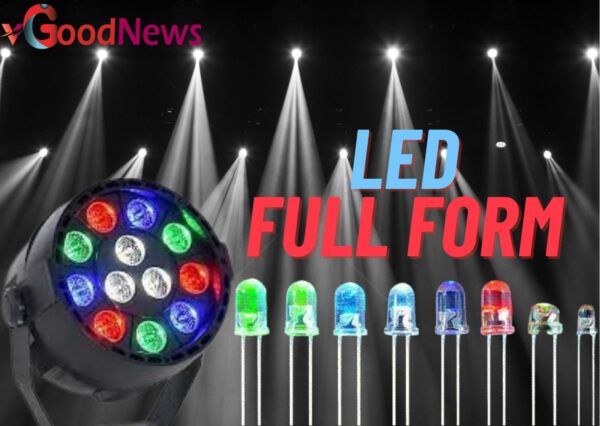LED Full Form: LED stands for Light Emitting Diode. LEDs are the most popular light source today due to their energy efficiency and broad spectrum of colors. They offer diverse lighting options suitable for residential, commercial, and industrial environments. Let’s delve into what LEDs are and how they have revolutionized lighting.
What is the Full Form of LED?
The full form of LED is Light Emitting Diode. It is called a full form because it describes the process of light production through the diode. LEDs come in two variants: when the diode is open, it is called half-bright; when it is closed, it is called full-bright. LEDs are a type of p-n junction diode where one end is the source, and the other is the drain. They can either complete the circuit or leave it incomplete. Various types of LEDs include dimming diodes, on/off diodes, and opto diodes. LED Full Form
The Science Behind LEDs
LEDs are an energy-saving technology garnering significant interest due to their unique qualities. A Light Emitting Diode (LED) is a semiconductor light source that emits bright light, ideal for numerous applications. LEDs offer high brightness, long lifespan, small size, and low cost, making them suitable for almost all lighting needs. LEDs emit bright, colorless light that can be tuned from blue to red and back. They can provide warm white, bright yellow, soft yellow, even red, natural yellow, and colored white light. LED Full Form
How Does an LED Work?
LEDs can emit light in thousands of colors through single-pass technology. They work under three primary lighting conditions: LED Full Form
- Rainbow Lighting Device: White and red LEDs emit white light suitable for indoor lamps. They are efficient at high temperatures but may not be long-lasting.
- T-Bulb Blue LED Light Source: Blue LEDs produce blue light used for outdoor lighting, such as floodlights, parking lots, and camping lights. They emit yellow light in the short term but may not be efficient over long periods.
Modern-Day Applications of LEDs
- LED Lamps: LEDs are highly efficient, consuming less energy and costing less than other light sources. They are commonly used in ceiling lights and street lights, replacing older technologies like mercury and halogen bulbs. LED lamps are easy to handle, maintain, and come in various colors, making rooms warmer and more comfortable. LED Full Form
- LED Displays: Modern technology heavily incorporates LED displays, particularly in screens and monitors. Many manufacturers now use LED lights in their products, providing numerous benefits such as better color accuracy and energy efficiency.
Conclusion
LEDs (LED Full Form) are widely used today for various reasons, primarily due to their energy efficiency, long lifespan, and versatility. When choosing lighting for your home or office, consider LEDs for a better, more cost-effective solution. LED technology represents the future, continually pushing the boundaries of what’s possible in lighting.
FAQs about LED Full Form
What does LED stand for?
LED stands for Light Emitting Diode.
Why are LEDs popular?
LEDs are popular due to their energy efficiency, long lifespan, and versatility.
What are some applications of LEDs?
LEDs are used in lamps, ceiling lights, street lights, and displays in screens and monitors.
How do LEDs produce light?
LEDs produce light through a semiconductor process, emitting light when an electric current passes through them.
What types of light can LEDs emit?
LEDs can emit a wide range of colors and various shades of white light, including warm white, bright yellow, soft yellow, and colored white.

